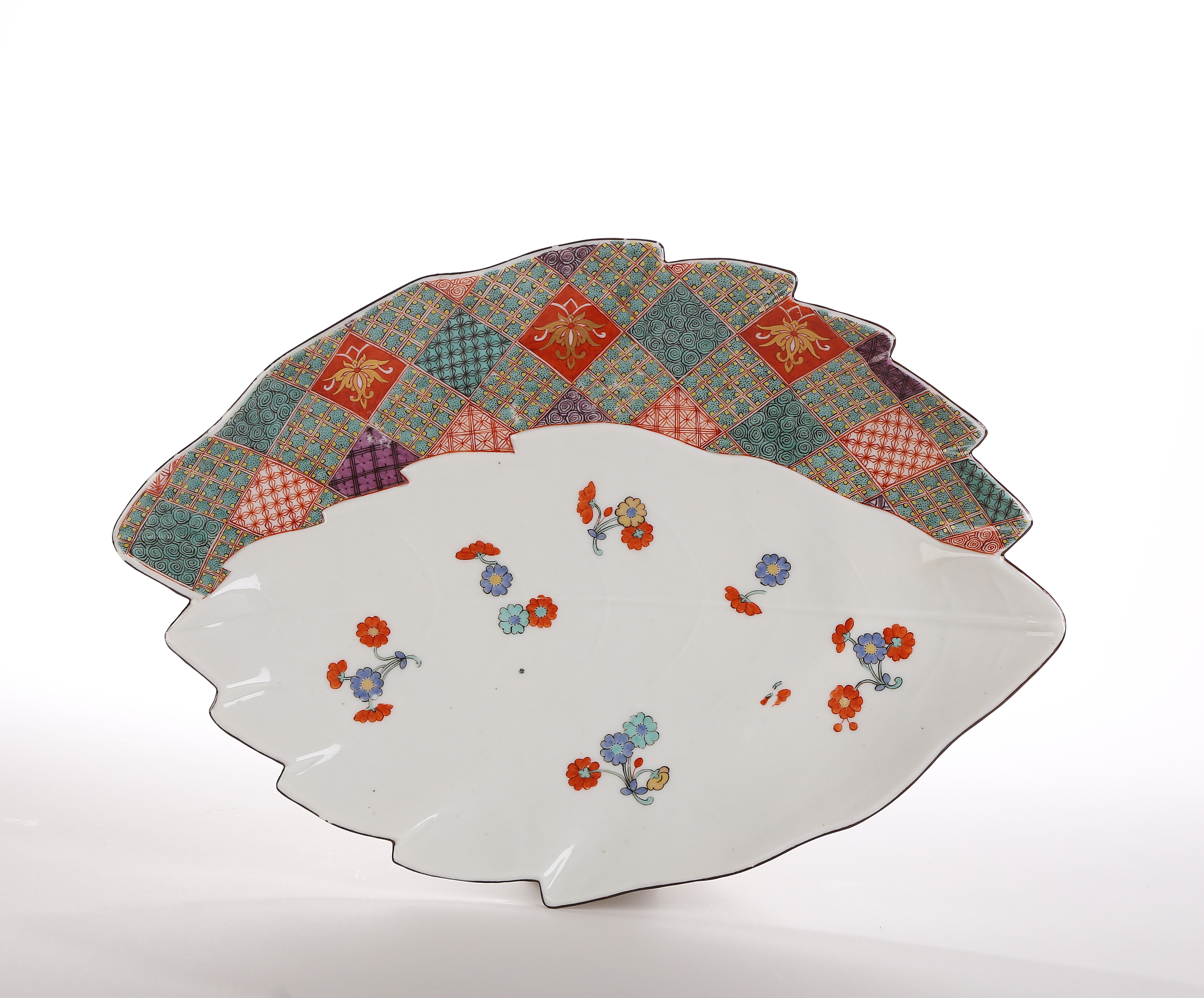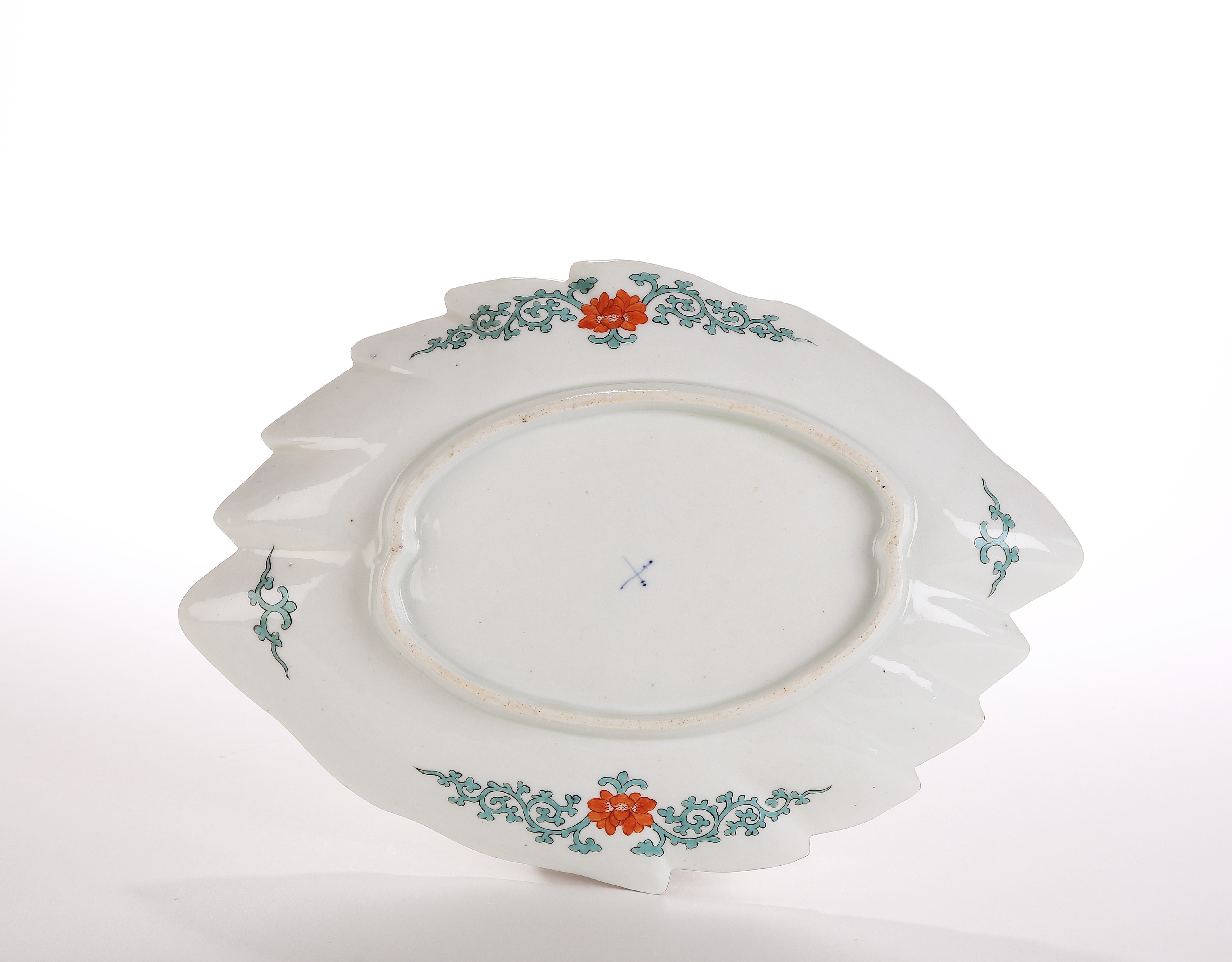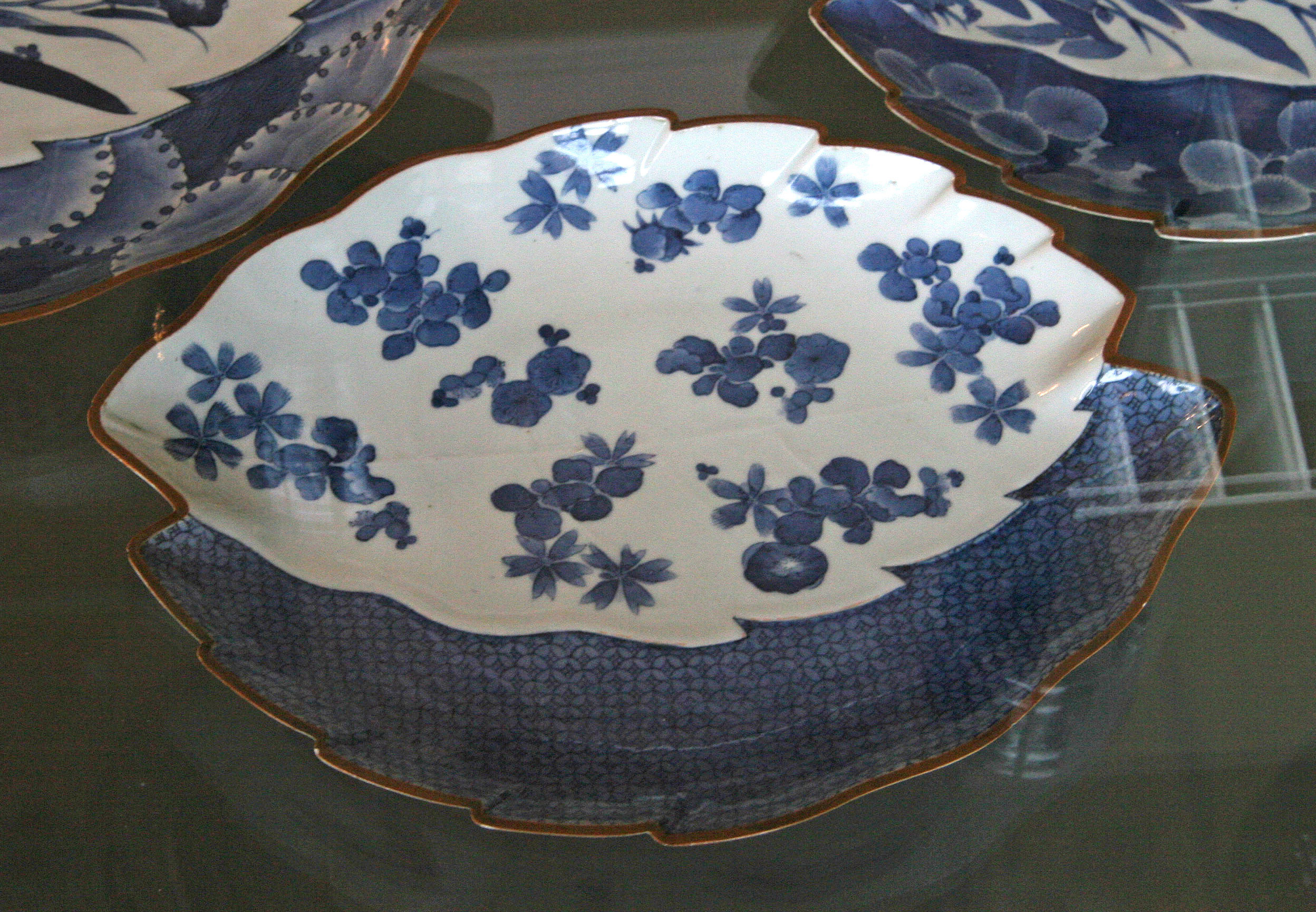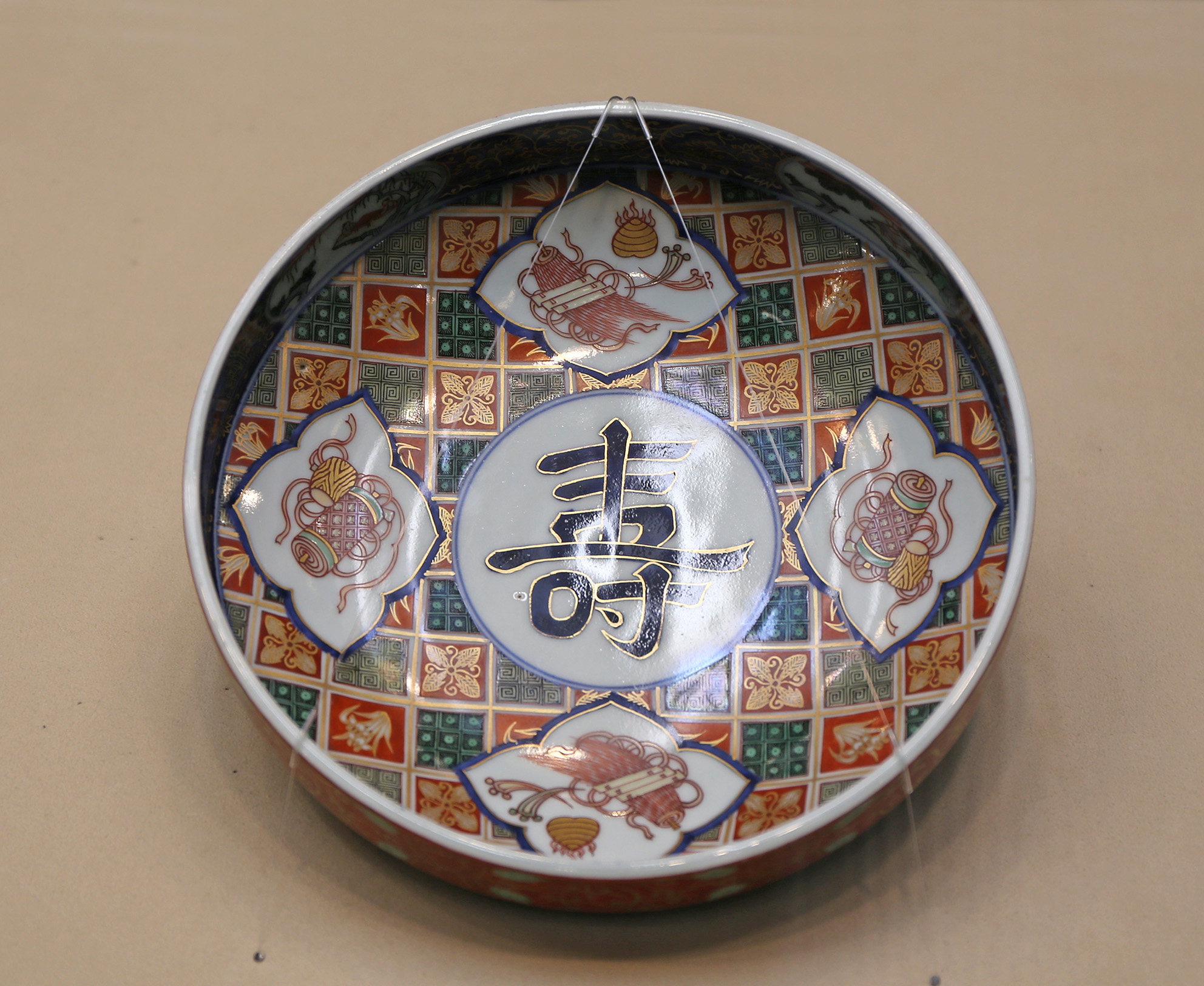Moulded as two overlapping leaves. The lower leaf enamelled with a chequerboard pattern of richly decorated squares the upper with scattered flower heads. The reverse with a flower head and green tendrils (karakusa).
The form is copied from Japanese Arita examples, of which blue and white versions are still preserved in Dresden from the collection of Augustus the Strong (Porzellansammlung, Dresden, Japanese Palace inventory mark N:473.www).
The chequered pattern is sometimes said to derive from Japanese brocaded textiles but in fact comes from Japanese, Arita, porcelains of the Genroku period (1688-1704) and slightly later, where it is called ishi-datami or ‘stone paving’ (Toguri Museum, Tokyo).
Identical alternation of flower heads in squares and geometric designs are found on Imari examples in the Toguri Museum, Tokyo (‘Old Imari Ware’, Toguri Museum of Art, 1991, p. 139, fig. 292) and the Shibata Collection, in The Kyushu Ceramic Museum, Arita. Wares of this type, sometimes called Kenjo Imari, were never intended for export in the late 17th or early 18th century but were amongst the rarer curiosities that came to Europe in the private trade and would have appealed to collectors of exotic rarities. A few related examples are still preserved in Dresden.
Johann Gregorius Höroldt, the head of the painting studio is recorded as paying the painter Horn 16 Groschen to paint ‘Oyster shells with mosaic pattern’, (‘Auster Schaalen mit der Mosaique sonsten dem Gesellen Horn’ 16 Groschen). (See Julia Weber, 2013, vol. II, p. 153, no. 123, for a full discussion)
Condition:
Very slight area of rubbing and flaking to brown enamel on the rim, no restoration
References:
For the Japanese blue and white dishes of this form see:
Eva Ströber, La Maladie de Porcelaine-: Ostasiatisches Porzellan aus der Sammlung Augusts des Starken, (2001), no. 62
Julia Weber, Meissener Porzellane Mit Dekoren Nach Ostasiatischen Vorbildern, Stiftung Ernst Schneider in Lustheim, (2013)
And Masako Shono, Japanisches Aritaporzellan im sogenannten Kakiemonstil als Vorbild für die Meissener Porzellanmanufaktur, (1973), no. 4
For a shell-shaped example with similar decoration and the Palace inventory no. N=57/W see Maria Santangelo, A Princely Pursuit, The Malcolm D. Gutter Collection of Early Meissen Porcelain, (2018, p. 197), no. 68
This item is sold





